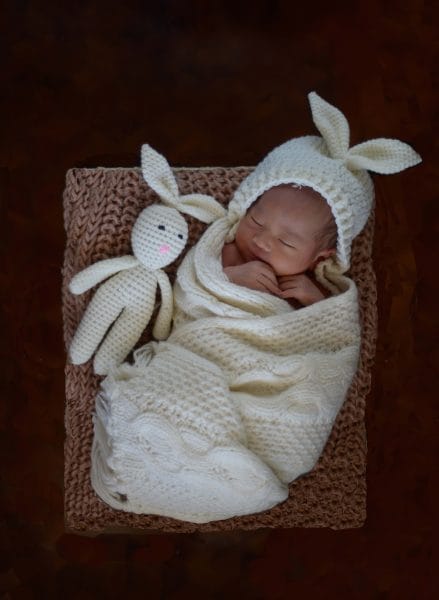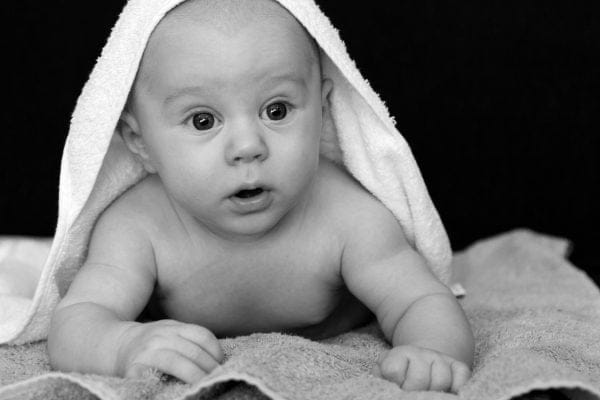Baby Loveys: When to Introduce, Benefits, Types, and Choosing the Right One
A baby lovey can be a magical thing. Also known as a comfort object, security blanket, or transitional object, a lovey is any item that a baby or toddler forms a bond with to feel comforted and secure. For many parents and guardians, introducing a lovey to their child’s life is a rite of passage, one that can lead to adorable affectionate relationships between a child and their inanimate snuggle buddy.
This article will delve into the intricacies of baby loveys, providing insights into when to introduce them, the benefits, the types of loveys available, and how to choose the best lovey for your baby.

What is a Baby Lovey?
![]()
A baby lovey is often a small blanket or soft toy that a baby can hold and cuddle. These items provide comfort and can help soothe a child, especially in times of separation from their parents or when settling down to sleep. Loveys come in various forms, from simple pieces of fabric to stuffed animals attached to a small blanket.
When Can Baby Sleep with Lovey?
![]()
One of the most common questions parents have is “when can baby sleep with lovey?” The American Academy of Pediatrics (AAP) recommends that soft objects such as loveys should not be placed in a baby’s sleep environment until they are at least 12 months old. This guideline is to reduce the risk of Sudden Infant Death Syndrome (SIDS) and suffocation. Once a child is of age, a lovey can become a key part of the bedtime routine, helping them to fall asleep more easily and feel secure throughout the night.
The Benefits of a Baby Lovey
![]()
Introducing a baby lovey can have several benefits:
- Comfort and Security: A lovey can serve as a source of comfort in stressful situations or during times of change, such as starting daycare or meeting new people.
- Transition: Loveys can help babies transition from being with their parents to being on their own, especially when it comes to sleeping through the night.
- Soothing: When babies are teething or feeling unwell, a lovey can help soothe them.
- Emotional Development: A lovey can also assist in a child’s emotional development by teaching them how to self-soothe.
Types of Baby Loveys
![]()
There are several types of loveys, and choosing the right one will depend on your baby’s preferences and needs:
- Baby Lovey Blanket: This is a small blanket often with an attached stuffed animal head. The baby lovey blanket is easy for little hands to grasp and carry around.
- Stuffed Animal Lovey: A plush toy can become a lovey if your child grows attached to it, though it’s best to choose one that is small and has no small parts or detachable accessories.
- Fabric Lovey: A simple piece of soft fabric, such as a piece of a parent’s old t-shirt, can also become a lovey as it carries the parent’s scent and provides tactile comfort.
Choosing the Best Lovey for Baby
![]()
When selecting a best lovey for baby, consider the following tips:
- Safety First: The lovey should be made from safe, non-toxic materials and be free from small parts or long strings that could pose a choking hazard or strangulation risk.
- Easy to Clean: Babies will drool, chew, and drag their lovey everywhere, so pick one that is machine washable and durable.
- Size Matters: It should be large enough for your baby to enjoy but not so large that it could cover their face and become a suffocation risk.
- Comfort is Key: Choose a lovey that’s soft to the touch and comforting for your baby to hold onto.
- Buy in Pairs: Since loveys can get lost or worn out, consider buying two identical ones so you can swap them out without your baby noticing.
Introducing a Lovey to Your Baby
![]()
When it’s time to introduce a lovey for baby, follow these steps to make the transition as smooth as possible:
- Start by keeping the lovey near you to absorb your scent.
- Place the lovey near your baby during playtime and cuddles so they can become familiar with it.
- Once your baby shows interest, let them explore the lovey under supervision. Watch how they interact with it and ensure it’s providing comfort.
- Include the lovey in your bedtime or naptime routine to associate it with sleep and relaxation.
Caring for Your Baby’s Lovey
![]()
Proper care of your baby’s lovey is essential to ensure it remains a safe and comforting presence in their life. Wash the lovey regularly to keep it clean and hygienic. Check it often for any signs of wear and tear that could make it unsafe. If the lovey starts to fall apart, it may be time to replace it with one of the backups you’ve wisely purchased.
When to Say Goodbye to the Lovey
![]()
As children grow, they may naturally wean off their lovey, or they may continue to use it as a source of comfort into their toddler years. There’s no set age for when a child should give up their lovey, but it’s important to ensure that their attachment isn’t interfering with their social development or daily activities. You can gradually encourage independence by setting limits on where and when the lovey can be used, such as only during naptime or bedtime.
Frequently Asked Questions
![]()
At what age can my baby start using a lovey?
You can introduce a lovey to your baby around 4 to 6 months old, but you should not leave it in the crib with an unsupervised baby until they are at least 12 months old to prevent any risk of suffocation or SIDS.
How do I choose a safe baby lovey?
Pick a lovey that is made from breathable, washable fabric without any small parts or choking hazards. It should be durable and not have any long strings or ribbons.
Can a baby lovey help my baby sleep better?
A lovey can act as a comfort object that soothes your baby, potentially helping them fall asleep more easily and possibly sleep more soundly. However, every baby is different, and what works for one might not work for another.
How many loveys should I have?
It’s a good idea to have at least two identical loveys. This way, you can wash one while your baby uses the other, and you have a backup in case one gets lost.
How do I introduce a lovey to my baby?
Hold the lovey when you cuddle or feed your baby to help them associate it with comfort and security. You can also place it near them during playtime so they can explore it on their own.
What if my baby doesn’t take to the lovey?
Not all babies will attach to a lovey, and that’s okay. If your baby shows no interest, they might find comfort in other ways. Just continue offering it occasionally to see if their interest changes.
How often should I wash my baby’s lovey?
Wash the lovey regularly, especially if your baby drools on it or if it falls on the floor often. Follow the care instructions on the label to make sure it’s cleaned properly and safely.
Can a lovey become a problem for my child’s development?
If a child relies on a lovey excessively, it might become an issue later on. However, most children naturally phase out their attachment to a lovey as they grow older.
Is it okay to take the lovey away from my toddler?
If you think it’s time to wean your child off the lovey, do it gradually. Start by limiting the lovey’s presence to naptime and bedtime, then slowly phase it out completely. Be sensitive to your child’s need for comfort during this transition.
Conclusion: The Lifelong Impact of a Baby Lovey
![]()
A baby lovey toy or blanket isn’t just a cute accessory; it’s a powerful tool in your parenting arsenal. It can ease transitions, soothe tears, and become a cherished part of your child’s life. By choosing the right lovey, introducing it at the appropriate time, and ensuring it’s safe and clean, you can provide your baby with a sense of security that may even blossom into a heartwarming childhood memory.
Remember to follow safety guidelines, respect your child’s pace in forming an attachment, and be ready to support them when the time comes to move on from their beloved comfort object.





